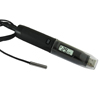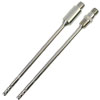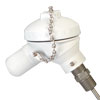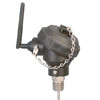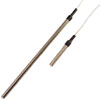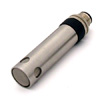How to Measure Car Surface Temperature After Production
When a car leaves the assembly line, the work is not yet over. Manufacturers need to check that completed cars meet quality and safety standards.
This is even more critical on luxury models, where every tiny detail needs to be perfect.
The challenge, then, is not just acquiring accurate test results. Testing must also be carried out in a way that does not alter or damage the vehicle in any way.
This is a problem when test sensors, such as surface thermocouples, are attached to the surface itself. There is a real risk of marking or scratching interiors or paintwork.
A perfect example is when a car’s air conditioning efficiency needs to be measured. The air conditioning unit has the highest power consumption of any element in the car. So it is mandatory that it does its job, to distribute cool air, as efficiently as possible.

Manufacturers will therefore use dozens of temperature sensing points in the cabin, to determine the how quickly it is cooled and how even the temperature is throughout.
The question is – what kinds of sensor equipment is best for this application?
Options for measuring surface temperatures
There are a number of ways to measure the temperature of surfaces.
The most popular one in general testing is using epoxy, or high temperature glue. The heat-conducting epoxy bonds the thermocouple to the surface, so that temperature can be reliably measured at a fixed point.
Read more about thermally conductive epoxies and grease
However, it is not hard to see why gluing a thermocouple to a newly-built car is not a good idea. The glue will irreversibly damage the surface being measured.!
Another option is to use temperature probes designed for surface measurement. These probes typically need to be hand-held during measuring. OMEGA models can measure temperatures up to 760°C.
Read more about high temperature thermocouple surface probes
However, there are two problems with surface probes for completed cars. Firstly, they are not suitable for temperature profiles as they need to be hand-held. And secondly, they are impractical for car interiors as a large number of sensors is needed for that application.
The solution: thermocouples with self-adhesive backing
To solve these issues, OMEGA has created a special surface thermocouple with self-adhesive backing. They can be easily used and re-used on car surfaces without causing damage because:
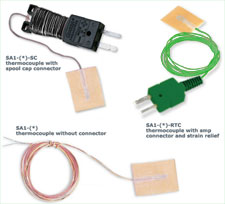
- Their gentle adhesive is safe for use on paint and interior surfaces
- They do not need to be hand-held, so are suitable for temperature profiles
- They are low-cost devices, enabling manufacturers to buy large numbers of sensors economically
These OMEGA sensors are also made with Class 1 tolerance wire, rated to 175°C for long-term use, and offer a response time of less than 0.3 seconds.
Read more about OMEGA Ready-Made Surface Thermocouples with Self-Adhesive Backing
If you would like to know more, or want to discuss your specific requirements, our technical team is here to help.
Contact us today.
temperature probe | Related Products
 CLOSE
CLOSE



